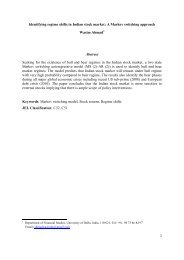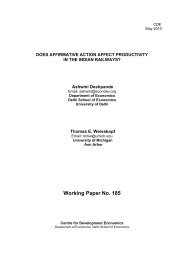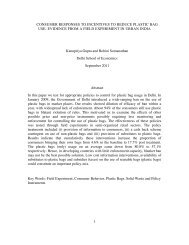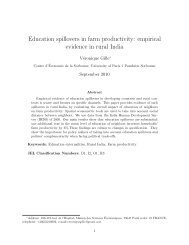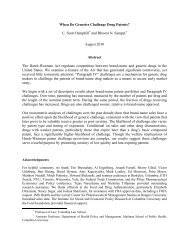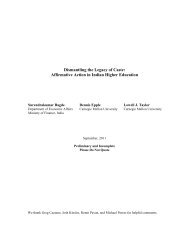Stochastic Dynamic Models for Political Regime Change and ...
Stochastic Dynamic Models for Political Regime Change and ...
Stochastic Dynamic Models for Political Regime Change and ...
You also want an ePaper? Increase the reach of your titles
YUMPU automatically turns print PDFs into web optimized ePapers that Google loves.
Our aim is to study the voting process as a three population (X, Y, Z) model (<strong>for</strong> a two<br />
party system with support base X <strong>and</strong> Y), with third population (Z) being passive towards any<br />
party even though they cast votes during election (assumptions need be taken on their voting<br />
behaviour also). We would like to study how, in an election X or Y becomes the winner <strong>and</strong><br />
how it depends on their deeds during the time interval between the two elections.<br />
In this direction, underst<strong>and</strong>ing the dynamics of (X, Y, Z) under some suitable st<strong>and</strong>ard<br />
assumptions would be important. Further, we would like to investigate what happens if the<br />
st<strong>and</strong>ard assumptions are violated. We would develop relevant theoretical results <strong>and</strong> also simulate<br />
the dynamics to see the changing pattern at different times <strong>and</strong> in the long run.<br />
Specific theoretical questions:<br />
1. What are the significant events <strong>for</strong> causing government change: Investment in campaigning<br />
or new projects happening?<br />
What would be the dynamics under the influence of such events.<br />
2. What are the conditions conducive to continuance (one party staying in power over repeated<br />
elections)? How to find P (x t+s > 1 2 |x t > 1 2 ) (x t being the share of X in the<br />
population)?<br />
3. What are the conditions <strong>for</strong> transition?<br />
4. What would be reliable estimates of transition probabilities <strong>and</strong> what would be the <strong>for</strong>m<br />
of a long run distribution of the population in types X, Y <strong>and</strong> Z?<br />
Section 2 describes our model with the alternative variations. The relevant theoretical discussions<br />
on results, both <strong>for</strong> passive <strong>and</strong> strategic behaviour, are presented in several subsections.<br />
The full Assembly model is discussed in section 3. In different subsections we discuss the modelling<br />
strategy, empirical results <strong>and</strong> strategic considerations. Section 4 mentions a few possible<br />
extensions to our basic model. These could be taken up in future work. Finally section 5<br />
concludes.<br />
2 The Two Party Model<br />
2.1 Single Constituency (Local) Model<br />
As mentioned above, the political parties engage in two kinds of activities. One of a developmental<br />
nature where the ruling party execute projects. These projects arrive r<strong>and</strong>omly at a rate<br />
λ > 0 per unit of time. If taken up, it may result in a success or failure (with probability f).<br />
A successful project results in additional funds <strong>for</strong> the ruling party as well as positive publicity.<br />
Whereas a failed project creates negative publicity. Publicity (positive or negative) results in<br />
increased or reduced support. In case of positive outcome, neutral or opposing party supporters<br />
3



